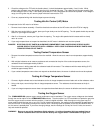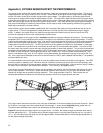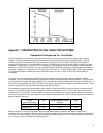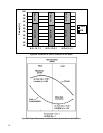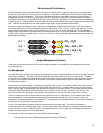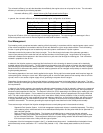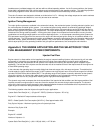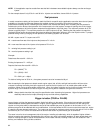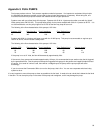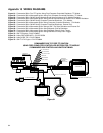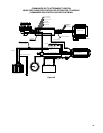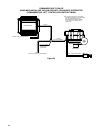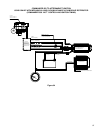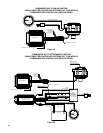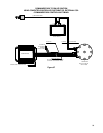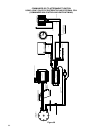
83
Appendix 9 FUEL PUMPS
Fuel pumps produce volume. Fuel pressure regulators make fuel pressure. It is important to understand this principle.
An adjustable fuel pressure regulator can be used to raise or lower fuel pressure, if necessary. When doing this, one
must ensure that the fuel pump can maintain the needed volume at higher pressures.
Systems come with one of two kinds of fuel pumps. Systems with 30 lb./hr. injectors and smaller come with the “black”
Holley pump (sales PN 512-105). This pump flows enough for the power available with 30 lb./hr. injectors at 45 PSI. It is
not recommended to run this pump higher than 50 PSI as the flow may drop off too much.
The following is the flow characteristics of this pump at 13.5 Volts:
Pressure (PSI) Flow (Lbs./Hr.) Flow (Liters/Hour) Flow (Gallons/Hour)
15 410 257 68
45 345 220 58
Systems with 36 lb./hr. injectors and larger come with the 12-920 pump. This pump is recommended on engines up to
700 HP at 45 PSI, which includes a safety factor.
The following is the flow characteristics of this pump at 13.5 Volts:
Pressure (PSI) Flow (Lbs./Hr.) Flow (Liters/Hour) Flow (Gallons/Hour) Current (Amps)
45 404 255 67 8
60 361 229 60 10
75 331 209 55 11.2
If the pump is run at 12 Volts, the flow will decrease by approximately 20%.
If the current of any pump used exceeds approximately 10 Amps, it is recommended to use another relay that is triggered
by the green/black wire. Use the pump manufacture’s suggested wire gauge for the positive and negative leads that feed
the pump. If too small of a wire is used, there will be a voltage drop to the pump and the pump output will suffer
accordingly.
If you do not want the Commander 950 to turn on the fuel pump, that is fine. You can use a separate switch and relay
system to do so.
It is very important to mount the pump as close as possible to the fuel tank. It needs to be at a level that is below the fuel level
in the tank. Do not clamp the pump in the center of the pump and overtighten, as this may damage the pump.



